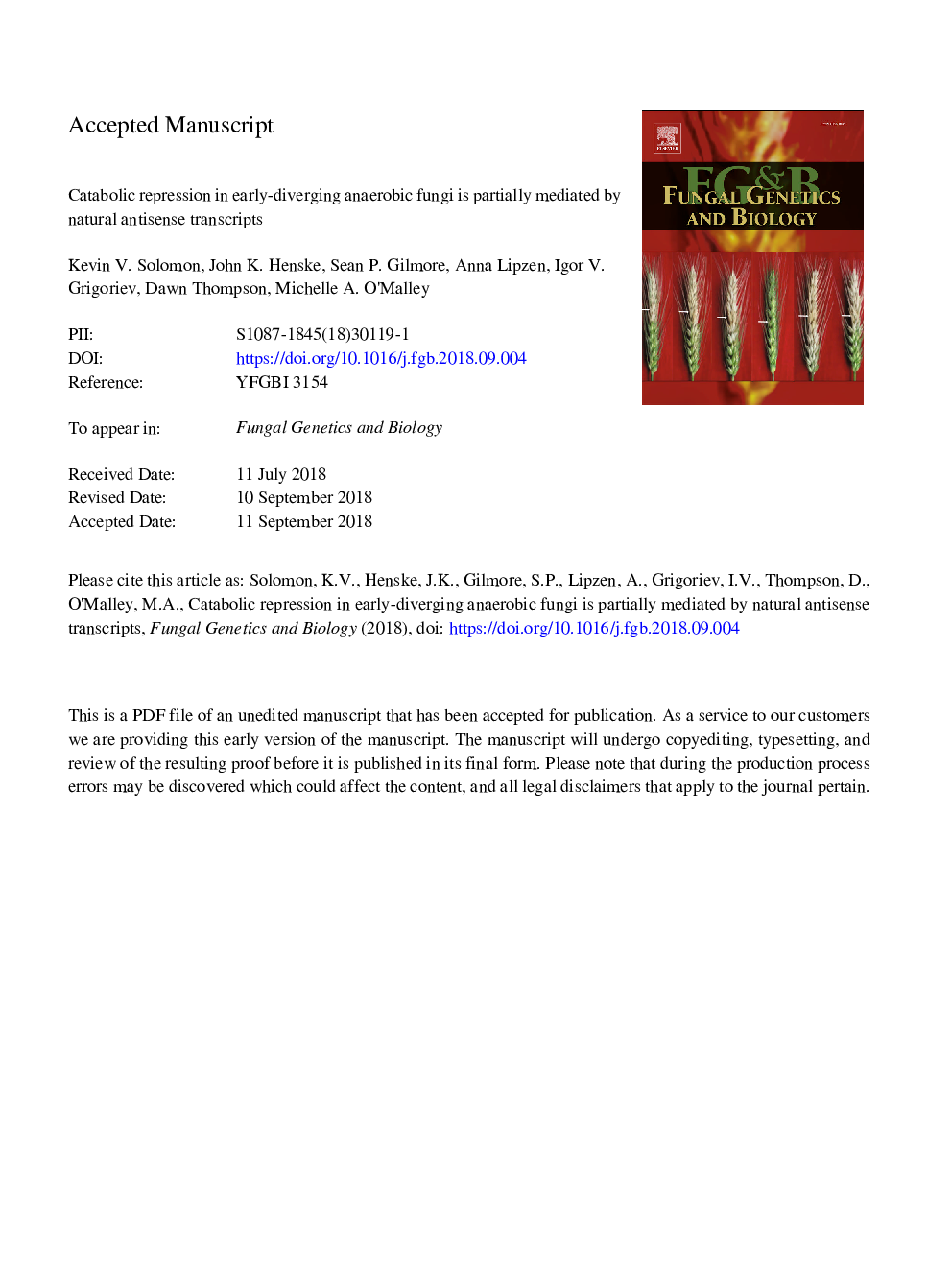| کد مقاله | کد نشریه | سال انتشار | مقاله انگلیسی | نسخه تمام متن |
|---|---|---|---|---|
| 11023131 | 1701343 | 2018 | 27 صفحه PDF | دانلود رایگان |
عنوان انگلیسی مقاله ISI
Catabolic repression in early-diverging anaerobic fungi is partially mediated by natural antisense transcripts
ترجمه فارسی عنوان
سرکوب کاتابولیک در قارچ های بی هوازی که در اوایل قاعدگی اتفاق می افتد، به طور جزئی توسط رونویسی های ضد انسدادی طبیعی
دانلود مقاله + سفارش ترجمه
دانلود مقاله ISI انگلیسی
رایگان برای ایرانیان
کلمات کلیدی
موضوعات مرتبط
علوم زیستی و بیوفناوری
بیوشیمی، ژنتیک و زیست شناسی مولکولی
بیولوژی سلول
چکیده انگلیسی
Early-diverging anaerobic fungi (order: Neocallimastigomycota), lignocelluolytic chytrid-like fungi central to fiber degradation in the digestive tracts of large herbivores, are attractive sources of cellulases and hemicellulases for biotechnology. Enzyme expression is tightly regulated and coordinated through mechanisms that remain unelucidated to optimize hydrolytic efficiency. Our analysis of anaerobic fungal transcriptomes reveals hundreds of cis-natural antisense transcripts (cis-NATs), which we hypothesize play an integral role in this regulation. Through integrated genomic and transcriptomic sequencing on a range of catabolic substrates, we validate these NATs in three species (Anaeromyces robustus, Neocallimasix californiae, and Piromyces finnis), and analyze their expression patterns and prevalence to gain insight into their function. NAT function was diverse and conserved across the three fungal genomes studied, with 10% of all metabolic process NATs associated with lignocellulose hydrolysis. Despite these similarities, however, only eleven gene targets were conserved orthologs. Several NATs were dynamically regulated by lignocellulosic substrates while their gene targets were unregulated. This observation is consistent with a hypothesized, but untested, regulatory mechanism where selected genes are exclusively regulated at the transcriptional/post-transcriptional level by NATs. However, only genes with high NAT relative expression levels displayed this phenomenon, suggesting a selection mechanism that favors larger dynamic ranges for more precise control of gene expression. In addition to this mode, we observed two other possible regulatory fates: canonical transcriptional regulation with no NAT response, and positive co-regulation of target mRNA and cognate NAT, which we hypothesize is a fine-tuning strategy to locally negate control outputs from global regulators. Our work reveals the complex contributions of antisense RNA to the catabolic response in anaerobic fungi, highlighting its importance in understanding lignocellulolytic activity for bioenergy applications. More importantly, the relative expression of NAT to target may form a critical determinant of transcriptional vs post-transcriptional (NAT) control of gene expression in primitive anaerobic fungi.
ناشر
Database: Elsevier - ScienceDirect (ساینس دایرکت)
Journal: Fungal Genetics and Biology - Volume 121, December 2018, Pages 1-9
Journal: Fungal Genetics and Biology - Volume 121, December 2018, Pages 1-9
نویسندگان
Kevin V. Solomon, John K. Henske, Sean P. Gilmore, Anna Lipzen, Igor V. Grigoriev, Dawn Thompson, Michelle A. O'Malley,
